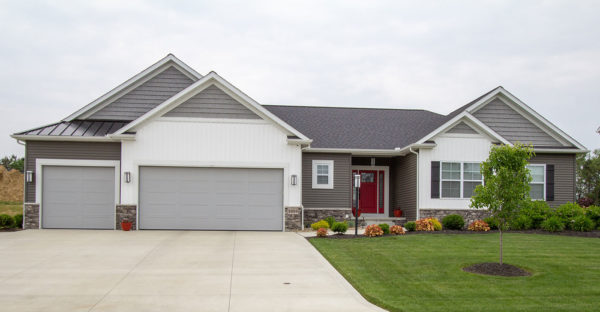How to choose a lot to build on for your lifestyle and budget
March 19, 2020 2:15 pm
Building a custom home is an exciting time in your life. Rea Custom Homes is here to help guide and educate you at each step along the way. One of the most important steps is at the very beginning is learning how to choose a lot to build on that works for your lifestyle and budget. Let’s talk about that first step … land evaluation.
Keep in mind, that before you purchase your land or improved lot, it’s best to have us come out to evaluate its current conditions and determine the needs and costs for getting it ready to build on.
Here are a few questions to consider:
- How much money do you want to spend on the land portion of your overall budget?
- Do you like to spend much of your free time maintaining your land/lot? Or would you rather spend your free time doing other activities?
- Do you prefer city utilities such as water and sewer? Or are you okay with a well and septic system which require maintenance, and will cost more up front?
Homesites can be divided into two distinct categories:
- Improved, meaning it has city utilities and is typically in a neighborhood.
- Not improved, or raw land.
Understanding the differences between the two, in both upfront costs and maintenance is key to choosing a lot to build on. Let’s dive into the differences.
- Improved:
An improved lot has city utilities, is typically between 1/3 and 1 acre in size and the site prep work and building costs are mostly straightforward. The primary variable for an improved lot is whether it is flat or sloped. There are a few others, but this is the most important. If the lot is sloped, does it require a walkout basement? Do you want a walk-out basement? Does the lot have topsoil on it? Is there a community topsoil pile or will I need to buy topsoil? This is one of the most critical factors when deciding how to choose a lot to build on.
- Not Improved:
This is land in its raw state. There are many more factors to consider when buying a raw piece of land. It is crucial that you have an expert builder help you navigate these differences. Raw land requires a lot more work, effort and cost in getting it ready to build a new home on. If this is what you are looking for, the rewards of having your own piece of privacy can be worth every bit of the cost and effort. Like anything, it’s best to be fully informed as to what lies ahead.

Depending on the size of the land, the slope and other conditions, you can easily get $50,000+ in site improvement and utility costs. Make sure you consider these questions:
- Is there a relatively flat spot for the house to sit? If so, is it easily accessible? What does it cost to get a driveway to the house location? Make sure the flat spot is on higher ground. You don’t want to build the house at the bottom of a hill.
- Do you prefer a walk-out basement?
- Does the lot have trees to clear? If so, what will it cost to remove them?
- Is the ground suitable for a septic system? You will need to have it evaluated. It will typically cost $15-30k for a septic system, with most in the $20-25k range. Do not buy a piece of ground without having the soils tested by a soil scientist and evaluated by the county health department.
- Is there a public water system available? If not, then you will need a well. Well costs vary based on depth and water quality. They typically cost between $8-25k. This would include a water purification system and softener.
- What is the best view?
- Beyond these items you’ll need to consider site prep costs; i.e: Is fill dirt needed or will you have too much dirt and need to haul some out? Is there topsoil on the land? Or will you need to buy some?
Other questions to ask:
- Will the home fit on the lot/land?
- Is the lot/land buildable? Has the lot been filled significantly to the point that it will affect foundation costs?
- What are the deed restrictions for the neighborhood? These may include a minimum house size, materials that must be used in construction, and whether outbuilding and fences are allowed. Get a copy of the neighborhood deed restrictions before buying the lot.
- What are the zoning requirements for the land (e.g., Stark County Zoning Department)?
- How can I position the house to take advantage of morning sun coming into my kitchen and breakfast area?
- Wetlands area? Confirm the property is not in a flood plain or protected wetlands area.
- Does the lot/land have any utility or drainage easements that may restrict the buildable area for the home? And how will the easement affect the property value?
By asking and getting answers to questions like these ahead of time, planning your budget becomes easier and less stressful. It will also help you decide if you’ve found your perfect piece of paradise or if you should keep looking. All these factors work together as you decide how to choose a lot to build on.
If you’re looking for building options, check out our home plans here!
For more information regarding our services, contact us!
Tags: How to choose a lot to build onCategorized in: General Building
This post was written by Rea Custom Homes

